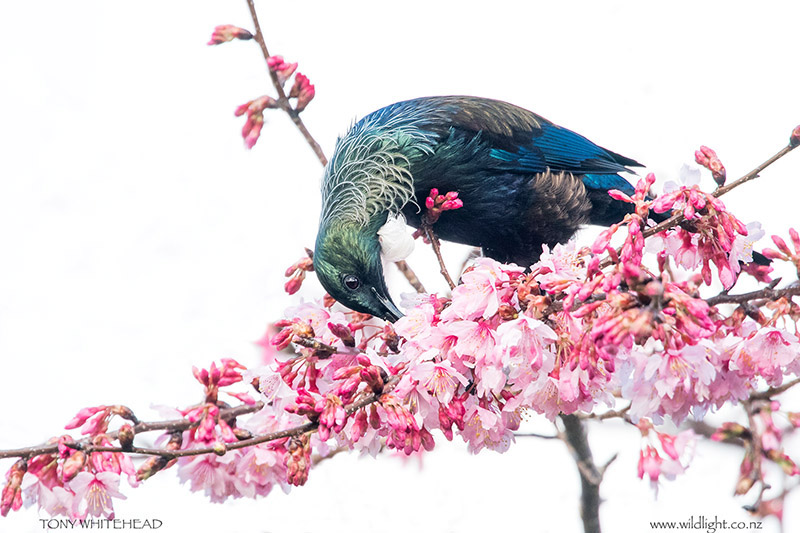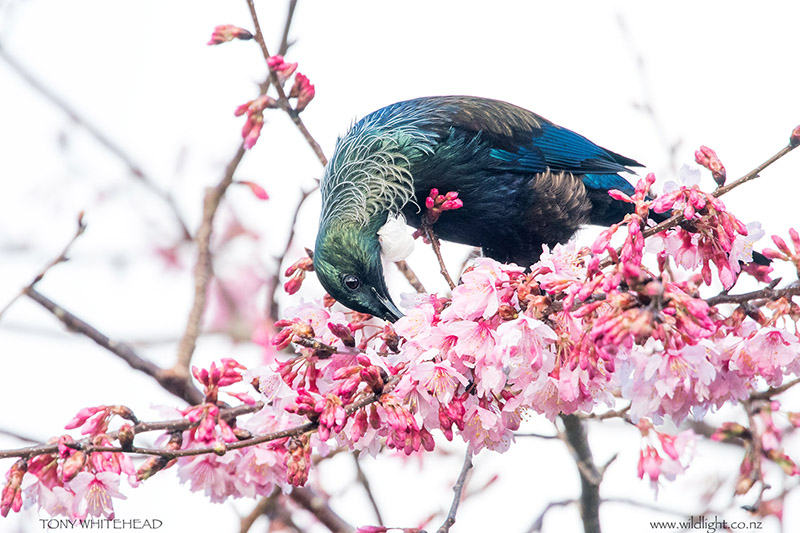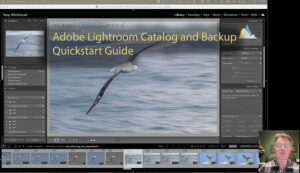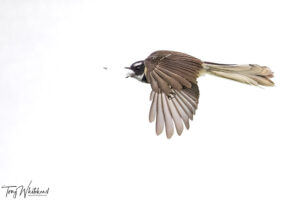I am always on the lookout for conditions that will suit high-key images of birds. Last weeks Auckland Botanical Gardens post included one of these images and prompted me to share one of the tools I often use to quickly and easily clean up these images, the Clone Stamp in Lighten mode. The first and most important thing is to get your exposure correct for the bird against the bright background. I prefer to work in manual mode set for the incident light level but if you prefer an automatic mode like Aperture priority, approximately 2 stops of plus exposure compensation usually has you in the ballpark. Checking the histogram should have the right side clipping and if you use the blinkies preview on your LCD it is fine to have the entire background blinking at you (but ideally, none of your subject blinking).
Once in your RAW processing software (I use Lightroom) it is a matter of working with your exposure, highlights, shadows, whites, blacks and contrast sliders to achieve a well rendered subject and white background. Holding down the Alt/Option key when using the sliders can indicate clipped values and it is fine to have the background clipping as long as your subject is not. At times this is not fully achieved in the RAW processor and then I will take the image into Photoshop, use a levels adjustment layer to push the background to clean white and then layer mask that levels adjustment to background alone.
This Tui image was an easy one to edit through the software but some random branches made it messy so I chose to remove them using the Clone Stamp set to Lighten mode. It lets you very easily sample (alt/option click) from the white background and paint over the branches in need of pruning. By adjusting the brush size (keyboard shortcut – square brackets) and keeping a soft edged brush you can quickly and cleanly remove the clutter. I always work on a separate layer which can then be masked if needed to blend changes into the original image.


Move the slider on the above image to see before and after versions.
With a pure white background, as in this image, the Clone Stamp would work fine in the normal mode but I find that changing to lighten mode adds versatility when working with light but not pure white backgrounds that have some variability. Altering the brush opacity and using a pressure sensitive pen on a Wacom tablets adds further control and finesse in editing. Conversely, the Clone Stamp can also be used in Darken mode when editing Low-key images.
Pruning in Photoshop can be controversial but in my opinion is perfectly valid in certain circumstances. When the aim is to create an artistic or illustrative work showing the bird at its best it is completely acceptable to clean up an image. For competition use it depends on the terms of the competition. Many nature photography competitions specify nothing to be added or removed (apart from dust and scratches which is interesting wording in this digital age) and that would preclude anything like this. These competitions usually request a copy of the RAW file if you reach the shortlist so with images that I am processing with this in mind no cloning is used. I would not even consider this Tui photo for competition use so am happy to play with it to clean it up and make a more pleasing image. Many photographers resent computer time but I am lucky that I love capturing images as well as time spent processing in the digital darkroom. Back in the day, when using film, developing negatives and darkroom time printing was all part of the process but the setup time and mixing chemicals was not such fun. Digitally you can drop into the zone easily and quickly and with far more control than in the analog days. To really appreciate a photo in the past you had to print it. Today we can appreciate our images on a computer, tablet or even a phone but nothing quite matches a print in you hand or in a frame on the wall. This final step is another enjoyable part of the process and has less chemical smell than the old darkroom route.
Tui photo with Nikon D500 and Nikon 300mm f4 PF lens with TC14II teleconverter.

